GIBRALTAR , BARKI AND
MAJ BHATTI'S LAST BATTLE - A VIEW FROM BOTH SIDES
 |
| OUTSIDE BARKI POLICE STATION ( MAJ H S SARAO SECOND FROM LEFT ) |
1 It
was a captured Pakistan Survey map, one
inch to a mile -1964 edition, an
American Field Telephone TA-1/PT serial No 15838, a water bottle, a pair of binoculars and an
American bayonet, alongwith a couple of B&W photographs of the ‘65 operations taken by my
father that finally persuaded me to do some research about the battle of Barki, which almost saw the Indian
Army knocking (unsucessfully) at the gates of Lahore. I had just come back home
on the annual term break from BCS Simla
to Ferozepur, where my father, Lt Col (then Maj) H S Sarao, SM was posted as a
Battery Commander in 165 Field Regiment (7Artillery Brigade /7Infantry
Division). It did help that after the cease-fire, when Barki village was declared ‘open’ for
civilians, media, politicians and families, I too had managed a ‘conducted’
tour of Barki. Years later, as the second – in - command of a medium regiment
when I was posted to the same formation in Ferozepur, I had an excellent opportunity to go through
some pretty accurate war records of the ‘65 operations as available in the Divisional
and Artillery Brigade archives.
 |
CAPTURED ARMS AND AMMUNITION
(Maj H S Sarao standing third from left) |
2 The
operations of 7 Infantry Division in the Barki area are well recorded and a
vast amount of material is available in various war diaries, newspaper clippings, magazines as also on the
net, but I decided to add a personal note by recounting the experiences of some of the dramatis personae who
actually fought the battle. A tremendous amount of information of the battle as
it unfolded was provided by my father. I also interviewed Maj Gen J S Bhullar,
AVSM, VSM a close friend of my father
and the CO 16 Punjab in 1965. The General passed away a few months back in 2016. I had also met late Brig Desmond Hayde, MVC who was the CO 3 Jat (Batapur and
Dograi fame) during the ‘65 operations. Brig Hayde , a fearless soldier passed
away in 2013. He had come for a Jat
Regimental re-union to Barielly in 2009 and I had obtained first hand
information from him of his experiences of the ‘65 and ‘71 wars. Additionally, certain factual mistakes were corrected by Brig Amar Cheema, son of late Brig Piara Singh VrC,MC. Brig Piara Singh had replaced Brig Shahane, who was sacked as Commander 48 Infantry Brigade after the capture of Hudiara, as we shall see later on.
3 I did manage to get a lot of historical data,
specially anecdotes pertaining to the other side of the hill , from Naveed
Tajammal Hussain Malik, son of the much respected Major Gen Tajammal Hussian Malik
of the Pak Army. Gen Tajammal (then Lt Col) was the CO 3 Baluch opposite the
Indian 15 Infantry Division sector in 1965. Later , during the ’71 war, as a
Brigade Commander (Pak 205 Infantry Brigade at Bogra.– Eastern sector) he held the singular distinction of not
surrendering with some of his units which continued fighting even after Pak
forces formally surrendered to Indian forces in Dhaka.
Gen Lachman Singh who was Gen Tajammals
opposing commander in the Hilli-Bogra sector(1971 war) has written about this in
his book, ‘Indian sword strikes in East Pakistan’. Interestingly, Gen Tajammal had been commissioned from
OTS Bangalore and had joined the 7 Rajput Regt in Feb1946. The two
officers from 7 Rajput who were transferred to the Pak Army after partition were
Tajammal and his senior, Nawaz Malik, both posted to 3rd/8th Punjab which later
became 3 Baluch in 1957. Both officers rose to the rank of General officers in
the Pak Army.
4 The
Gen was indicted and imprisoned for a coup attempt against Gen Zia-ul-Haq in
1980 along with his son Naveed Malik who had also been commissioned in 3 Baluch
and was the Adjutant of the Battalion at that time. It is not common knowledge
that there were two earlier coup attempts, the
first in Feb1976 and the second on 26 June 1977 which went undetected, till
the third one in which Gen Tajammal and Naveed were implicated in March 1980. Both
were tried by a FGCM on a joint - single Charge Sheet,with nine different
charges. Gen Tajammal was given life imprisonment and Naveed got 10 years RI. It was in the jail that the Gen
dictated Naveed his book,'The Story of My
Struggle', later published by Jhang publishers. Gen Tajammal was released in 1988 after Zia’s mysterious plane
crash and passed away in 2003. His book covers
certain aspects of both the ‘65 and ‘71 wars.
5 I found it strange that though in all the
material authored by Indian writers and in various records available on the Indian side, the commencement of the Indo-Pak hostilities
was squarely attributed to Pakistan whereas a large number of books and research
papers/commentaries by Pak authors claim that the ’65 war was started by India,
when it launched its counter offensive
by crossing the IB. As far as a true
military commentary on the operations in the Punjab sector are concerned, Maj (retd) A H Amin, 11 PAVO
Cavalry, Pakistan, in his article (The
Battle for Ravi-Sutlej Corridor 1965 - A Strategic and Operational analysis)
gives perhaps one of the most truthful and dispassionate analysis of the
happenings specially in the Ravi-Satluj corridor. On the other extreme are
various papers/write-ups/commentaries of not much military/historical
significance. A lot of writers (Yasin Khan for one) also tend to gravitate more towards hype, romanticism
and mythology.
How The War Started-Some Myths
and SomeTruths
6 Who started the war or to put it more
palatably – how did the war start ?? Just as it would be naïve for the Indians
to keep repeating that the ‘71 war was started by Pakistan it would be
extremely myopic to continue haranguing now,
almost half a century after that war, that India was the aggressor in
1965. In 1971 Indian regular troops were
already making forays across the IB in what was then East Pakistan. All that
happened was that Pakistan pre-empted the planned Indian offensive by
commencing hostilities along the Western front on 03 December whereas the
Indians had planned to launch their
offensive for 04 December.
7 The genesis of the '65 war can actually be traced back to the Kutch crisis. Hassan Abbas (Pakistan's Drift Into Extremism: Allah, The Army, And America's War On Terror) says , quote ,' When the Pakistan Army inflicted a short, sharp reverse on the Indians in the Rann of Kutch in mid-1965, Ayub’s spirits got a boost. More important, the international arbitration that followed the Kutch dispute (resulting in favor of Pakistan) put Pakistan under the assumption that if the Kashmir problem was to be solved, the Rann of Kutch route would have to be replicated - a limited clash in Kashmir leading to a threat of all-out war, and then an intervention and arbitration by the great powers', unquote. Emboldened
by the rather timid and weak response of the Indian politico-military
leadership during the Kutch crisis , Operation Gibraltar was conceived to get back the Indian part of Kashmir
through a covert operation. A plan which almost all Pakistani and neutral
analysts have maintained was ‘a clumsy attempt’ to wrest control of ‘Indian
Occupied Kashmir’ and was doomed to collapse. Not only this, what was more surprising and completely contrary to the accepted principles of war was the total lack of coordination and integrated planning for Operation Gibraltar and its followup, Operation Grand Slam. This (Grand Slam) sequel to Gibraltar envisaged an attack on the vital Akhnoor Bridge in Jammu and Kashmir, which was not only the lifeline of an entire infantry division in Jammu and Kashmir but could also be used to threaten Jammu, an important logistical point for Indian forces. General K. M. Arif, in his biography (Khaki Shadows: Pakistan1947-97), writes ,“ It is amply clear, though, that all prudent civil- military mechanisms of defense strategy and policy planning were bypassed in the pre-planning of Operation Grand Slam. The Defense Committee of the Cabinet (DCC)—the apex defense policy making body of the country—did not even meet prior to or during the war. The Defense Services Chiefs Committee (DSCC) which comprises the three services chiefs and is required to approve all military plans was never even informed about the existence of the plan. The air and naval chiefs deeply resented the fact that they were not taken into confidence.”
8 According to then Chief of the Pakistan Air Force, Air Marshal Nur Khan, there was little coordination amongst the military services
on the impending operation. In any case the plan went completely awry in execution . The infiltrating troops and a large number of
irregular and ‘volunteers’ known as the ‘Gibraltar Force’ were organized and commanded by GOC 12
Infantry Division , Major
General Akhtar Malik, subsequently awarded the Hilal-i-Jurat for his role in the planning and
execution of Gibraltar. In one of the biggest mysteries and blunders related to
the inept Pak handling and lack of higher direction of war (not that the
Indians did any better, in this war atleast), he was in-explicably replaced by Maj
Gen Yahya Khan (later Chief) just when Akhnur was within the grasp of the Pak
Army ! As MJ Akbar the Indian journalist says , '' at this point, someone’s prayers worked , an inexplicable change of command took place.”
9
Ahmad Faruqui, the well known defense
analyst and economist (Rethinking
the National Security of Pakistan) says that when he asked Sajjad Haider, a retired Air Commodore (author of the book, Flight of the Falcon - Demolishing myths of
Indo-Pak wars of 1965 and 1971), to name the aggressor, ’ Nosy’ Haider, a
PAF fighter pilot (‘jaunty-angled
cap, silk scarves, special boots, and even the way they stand’), known for his rather controversial but
no holds barred comments, not mincing any words said very unequivocally, ‘Ayub
perpetrated the war.’
10 Any how, be that as it may , Gibraltar was
launched and India after an initial phase of set backs , in a series of retaliatory
operations, managed to eliminate the saboteurs and capture some tactically
advantageous Pak posts across the Cease
Fire Line. The loss of Hajipir Pass in August ’65
along with Indian successes in the Neelam Valley and opposite Uri unnerved the
Pakistani GHQ which assumed that Muzaffarabad was about to be addressed next . It was under these
circumstances that the Pak
GHQ ordered launch of Operation
Grand Slam on 01 Sep 1965 to
cut off the Indian supply lines to J& K. So was Grand Slam
initiated as a result of Indian aggression or was it a continuum of the already
initiated but now precariously poised Pakistani plan to whip up the local
Kashmiri population to a frenzy, so that the larger plan to integrate the state
of J & K to Pakistan could be fructified??
11 Brig
(retd) Shaukat Qadir, an impartial and independent analyst clearly
mentions that Pakistan's Operation Grand Slam was ‘one of a number of
contingency plans that had been prepared to support Gibraltar’. Operation Grand Slam basically intended to
sever the road link between India and Indian held Kashmir once the valley was
up in flames. Operation Grand Slam was four phased says Shaukat Qadir ( The 1965 War-A Comedy of Errors) : the capture of Chamb, the crossing
of river Tawi and consolidation, followed by the capture of Akhnur, and finally
severing the Indian lines of communication and capturing Rajauri. As mentioned
earlier , the failure of Gibraltar resulted in the loss of some key Pak posts in Kashmir, and it was then that Operation Grand Slam was
undertaken to relieve pressure on the Pak troops in Kashmir. It is interesting that the Pak columnist Lt Col (retd) Mukhtar Ahmad Gilani (Panoramic Analysis —Senior and Junior Leaders —Aug 1947 to Dec 1971) calls the Pak foray into J&K as a ‘counter-offensive’. He states that ‘’After launching the counter offensive (sic) in Chamb-Jaurian Sector the Pakistan high command (the President, the C-in-C and the CGS) had failed to foresee the strategic counter action of the Indian Army against Sialkot, Lahore and Kasur, in view of the foreign office assurance, that India would confine its retaliation to the territorial limits of Kashmir’’. It is a known fact that the Indian thrust across the IB was infact a counter offensive in retaliation to ‘Gibraltar / Grand Slam’.
12 Maj (Retd) Agha Humayun Amin (Grand Slam-A Battle of Lost Opportunities)
mentions that on being briefed by Major General Akhtar
Malik (GOC 12 Infantry Division) on the Gibraltar
plan, Ayub suggested that 12 Infantry Division
should also capture Akhnur. This attack was codenamed ‘Operation Grand Slam’
and was planned as a sequel to ‘Gibraltar’. Similarly
Shaukat Riza, the official
historian (Pak) of the 1965 War has admitted that by 31 Aug once the Indians
had ruptured 12 Infantry Division’s defences across the cease fire line, the
Pak GHQ decided to launch Grand Slam to ease pressure on the Division by capturing Chamb and threatening Akhnur. In an extremely aggressive, well
planned and confident move, Pak infantry units backed by
armour overran the Indian outpost in Chamb in the initial phase itself, crossed
the Tawi river and were headed towards Akhnur in order to cut off India’s line
of communication with Srinagar.
13 The
Indians were now under tremendous pressure and the military situation was
getting precarious in the
Kashmir sector. Ahmad Faruqui puts it on record ‘’ that the Indian response on
Sept 06 across the international border at Lahore was a natural
counter-response, not an act of aggression.’’ To relieve forces almost cut off
in their part of Kashmir, the Indian Government took the momentous decision, as
advised by Gen J N Chaudhuri, to open another front across the IB. The aim was to
relieve the pressure in J&K where the situation was getting uncomfortable
for the Indian Army. Sultan M. Hali (Operation Gibraltar—An Unmitigated Disaster?) adds that, '' --the guarantee by the Foreign Office that India would not dare to conduct a full scale attack was a civilian opinion. As military commanders, Ayub and Musa should have taken all contingencies into consideration, including that of a full scale war. Neither the Supreme Commander (Field Marshal Ayub Khan) nor the C-in-C (Gen Musa) and his General Staff, viewed the chances of a full scale war with India as 'probable' leave alone warranting the cancellation of leave. It was a gross misconception and miscalculation of the operating factors which sent the Pakistan Army into battle on Sept 6, 1965 with 25% of its strength on annual leave, it was inexcusable because the C-in-C Gen Musa and his General Staff knew fully that the entire Kashmir Valley had been ablaze for over a month and ferocious air and land battles were being fought in Chamb-Jaurian sector for nearly a week, involving large formations of armour, infantry and artillery. Under the circumstances, it was Pakistan that was caught napping''.
The
Western Front –The Indian Riposte
14 Following this, the Indian Army then
counterattacked by crossing the international border thus opening the Western
front in Pakistan Punjab to force the Pakistan Army to relocate troops
and distract the Pak Army's attention and resources away from Operation Grand
Slam. And thus started the second Indo - Pak war of 1965. Yes, there were no
declarations of war made by the adversaries, either when the Pak troops crossed
over in J&K nor later when the Indian troops crossed over in the Punjab.
Circumstances and perceptions may differ on warring sides, but historical facts
cannot be changed or misrepresented for partisan reasons. In this article, to be fair, events as they unfolded have been
recorded as viewed from both sides. Coming on to the question as to who won the '65 war , Dennis Kux has summed it up very aptly that India “won simply by not losing''. The reader may chose to interpret this very candid and truthful remark in which ever way he choses to decide who won the war.
 |
' PATTON NAGAR' (THE GRAVEYARD) AT BHIKIWIND VILLAGE
(Pic credit : Maj H S Sarao) |
The XI Corps Plan (India)
15 Coming on now to the Indian counter-offensive
which entailed the opening of the second front. This study is being restricted
to the operations of XI Corps ( Lt Gen J S Dhillon who later rose to be Central
Army Commander ) in so far as 7 Infantry Div and the Barki battle are concerned.
The Indian plan envisaged a major attack in the Ravi-Sutlej Corridor employing XI
Corps with its three Divisions , 4
Mountain Division (Maj Gen Gurbaksh Singh), 7
Infantry Division (Maj Gen H K Sibbal) and 15
Infantry Division (Maj Gen Niranjan Prasad , later sacked), along the three
axis with15 Infantry Division on the Amritsar-Lahore axis, 7 Infantry Division
on the Khalra-Barki-Lahore axis and 4
Mountain Division on the Khem
Karan-Kasur axis. Each division had two brigades
while their third brigade was held by 11 Corps as reserve, for other tasks. The
Divisions had their organic artillery brigades( mainly 25 Pdrs). 21 Independent
Artillery Brigade consisting of one medium
5.5’’and one heavy regiment (7.2’’ howitzer ) was also part of 11 Corps. Pradeep
Barua in his book ,The State At War In
South Asia’ (Chapter 10 ,The Second
Indo Pakistan War) gives a fairly good over-view of XI Corps operations on
the Lahore front. The only factual error made here is when he mentions that ,
‘’ The Pakistani’s had blown up the bridge (Hudiara), which meant that Indian
Army engineers had to construct a Bailey bridge that afternoon under air and artillery attack.’’ There was no
air activity by, either PAF or the IAF and neither did the bridging site come
under artillery fire.
 |
HUDIARA BRIDGE-A SPAN WAS BLOWN UP BY RETREATING PAK FORCES
(Pic credit : Maj H S Sarao) |
Pak
1 Corps
16 On the Pak side in this sector was 1 Corps
(Khariyan) under Lt Gen Bukhtiar
Rana, MC, the Corps Commander with 10 Division (Major General Sarfaraz Khan) and 11 Division (Maj
Gen Abdul Hamid Khan). 10 Division had seven infantry
battalions, 23 Cavalry, 30 TDU and some Rangers and was defending Lahore
and Bedian area with its three Brigades
(22,103 and 114). 103 Brigade with two battalions and
a squadron of 30 TDU had about 20,000 yards of front with the Burki Road and
Hudiara Siphon crossings of the BRBL. 11 Infantry Division with two Brigades
(21 and 106) was deployed southwards up to Kasur. Noteworthy here is the strong
artillery complement which the Pak formations enjoyed at the time , an
advantage they were to permanently lose in subsequent years. Pak 10 Division artillery included 30 Heavy Regiment consisting of eight
155 mm guns (American) and four 8’’ Howitzers (American). In addition, the Division
had three medium regiments supporting
its three infantry Brigades plus one more medium regiment and two locating
batteries. Pak 11 Infantry Division had three
field regiments, one mortar troop, one medium regiment, one heavy regiment (eight
8‘’ Howitzers and four 155 mm guns) and a corps locating regiment.
 |
US MARKINGS NOT YET REMOVED!!
(Pic credit : Maj H S Sarao) |
Khalra-Barki-Lahore Axis-7
Div Operations
17 In accordance with the plan , on the night of
05/06 Sep 1965, the Indian XI Corps began its operations by advancing
towards Lahore along three axis : Amritsar-Lahore, Khalra-Burki- Lahore and
Khem Karan-Kasur roads. For operations along Khalra –Burki-Lahore axis , 7
Infantry Division was given a two phase plan for the capture of Barki and the
advance upto the Ichogil Canal. In Phase One, it was to advance with 48 Infantry
Brigade
(Brig KJS Shahane) supported by a tank squadron less one
troop Central India Horse ( CO Lt Col SC Joshi later
KIA , Sep 12) along axis Khalra-Barki capturing Barki and securing the
adjacent bridge over the Ichogil Canal (BRBL) by last light 06 September. Simultaneously,
17 Rajput (Lt Col AS Gill) of 48 Inf Bde was independently tasked to block any
Pak ingress from Bedian .
 |
MOSQUE IN VILLAGE BARA KHURD
(Pic credit : Maj H S Sarao) |
18 The Division plan envisaged establishment of
a firm base by 65 Infantry Brigade (Brig L Ferris) and then
an advance along axis Wan - Bedian to secure Bedian by the evening of 06 Sep. 65
Infantry Brigade was thereafter to send one battalion to secure and destroy the
bridge over Ichhogil Canal near village Hira. Subsequently in Phase Two, 65
Infantry Brigade was to carry out mopping up operations up to the Eastern bank
of Ichhogil Canal. To put things in the right perspective Hudiara was about 4
Kms from the IB , Barki 9.5 Kms and Lahore about 33.5 Kms from the IB.
19 In addition to its integral artillery , the
Division had a Battery of 40 Medium Regiment in support. Simultaneously an independent
task force directly under 7 Division HQ comprising 17 Rajput and one tank troop
(Central India Horse), supported by a regiment strength of artillery and a
field company of engineers was to cross the border at axis Wan-Bedian and
secure Bedian by last light 06 Sep. In Phase Two, 65 Infantry Brigade was to
carry out mopping up operations along BRBL and also destroy all bridges on BRBL
within 7 Division area of responsibility.
The Indian Advance Upto
Hudiara
20 Accordingly, 48 Infantry Brigade concentrated at Sidhwan -
Mughal Chak and 65 Infantry Brigade at Marimegha with one of its battalions (17
Rajput) at Marikamboke. On 06 Sep
’65 morning, 7 Indian Infantry Division
crossed the IB at about 0430 hours and headed for Ichhogil Canal, along the
Khalra-Burki-Lahore axis. 4 Sikh (65
Infantry Brigade) and 6/8 Gorkha Rifles (48 Infantry Brigade) captured the
assigned Pakistani Border Out Posts (BOPs) overcoming
minor opposition of the Pak Sutlej Rangers and the Customs Check Post near
Bedian. The Rangers posts at Theh Sarja Marja and Rakh Hardit Singh were
cleared by 4 Sikh and the post at Ghawindi Barrier by 6/8 GR. It was at
Ghawindi Barrier that an incident (not many are aware of it, neither is it
recorded anywhere) took place which deserves mention. Once the Barrier was captured
and the Pak Rangers were being disarmed , one of the Pak Rangers bayoneted an
Indian officer (6/8 GR) , there is only conjecture as to the provocation but with
adrenalin running high on both sides, the response of the Gurkha soldiers was
swift and angry. Further details are lost in the mists of time.
21 6/8 GR (Lt Col GA Nagle)
now leading reached
the Hudiara Drain by about 07 00 hours where the advance , till now
almost unopposed, stalled because of Pak artillery fire and opposition by a Pak advance position.The Indian troops drew fire from
Hudiara village, Hudiara Bridge area and Nurpur village. By 1000 hours
Hudiara village was secured. Nurpur village, Hudiara Drain and the area around was finally captured by
6/8 GR and 5 Guards (Lt Col FS Sondhi) with Squadron CIH by late evening by an
outflanking manoeuvre, though the planned timings and
the progress of operations had already gone awry to some extent. But
there is a story here related to 48 Infantry Brigade’s advance and subsequent
capture of the Hudiara Bridge, as from this point onwards the Commander 48 Infantry
Brigade was ’relieved’.
22 On the other side , Major Shafqat Baloch ,
Company Commander Delta Company 17 Punjab Regiment (Haidris) though wounded
in the action here, had opposed the Indian advance valiantly and was later
awarded the “Sitara-e-Jurrat” for his action. His citation reads, “But for this
officer’s gallant, bold and inspiring leadership the whole defence of Lahore
would have been jeopardized’’. Interestingly,
there was no major battle here though the well lead Pak troops (probably less
than a platoon) did manage to delay the leading elements of 48 Infantry Brigade
and unnerve the Brigade Commander. A number of
Pakistani civilians from bordering towns and villages were taken as POWs
and both sides did suffer a few casualities. It therefore is inconsistent with
the facts on ground when Lt Col (retd) Syed Shahid Abbas (Nine
Crucial Hours - When Courage Outmaneuvered Strength) writes that ‘‘after the declaration of
ceasefire on 23 September as per the information received from across the
border, the Indians had suffered 400 casualities’’. Equally incongruous is that Gen Harbaksh in
his book ‘War
Despatches’ (Para 43,Page 49 ) mentions ---‘’General
Officer Commanding 7 Division appreciating that 48 Infantry Brigade had
suffered fairly heavy casualities in the battle for Hudiara Drain, switched 65
Infantry Brigade Group into the lead---‘’ . This was certainly not the case as
we shall see later on. Infact the same can be verified from 48 Infantry Brigade
records and from the casuality returns of 7 Infantry Division even today.
( also see ------ https://plus.google.com/106165305451833321814/posts/UraoTLsjvGL)
No move, No Provocative Action !!
23 Let us go back for a
moment now and see what was happening on
the Pak side as the Indian Army was approaching its jump off positions to open
a second front. Maj (retd) A H Amin says
that on 04 Sep night the Pakistani GHQ had sent a signal to all
formations asking them to take
“necessary defensive measures” against India. War had not yet broken out but
Pakistan had already launched an infantry division/armored brigade size attack
in Indian Held Kashmir on 01 Sep. The signal read -------
‘‘ PakArmy DTE Sept 042230:Latest Intelligence reports indicate
Indian concentration on both East and West Pakistan and such flash
announcements on All India Radio as QUOTE Pakistanis attacking Jammu etc.
UNQUOTE indicate their aggressive intention, formations will take necessary
defensive measures (.) All Informed.’’
24 This signal from the Pak
GHQ appears to be a classic case of what is known in Army parlance as ‘keeping
one’s tail clear’. It is on record that
on the night of Sep 05/06, HQ 10 Infantry Division (Pak) checked with the Military Operations Directorate regarding move
of troops to their operational positions on the border. They were told that
" the Foreign Ministry had not yet given clearance for such a move, therefore,
the GHQ cannot order this move in writing. However, the local Garrison Commander
can of course, use his own discretion." One of the reasons contributing to many such
indecisions and lack of clarity as well as inability to exploit fleeting
windows of opportunity in the absence of a broader combat picture was, as Brig(retd) Shaukat Qadir (Why Pakistan lost
Akhnur-Operation Grand Slam) has pointed out , because the Pak
Army at that time did not have the concept of a Corps HQ between the Div and
the GHQ!! During the 65’ war there was only one Corps HQ in the Pak Army and only two officers of Lt Gen rank, Bakhtir
Rana and Altaf Qadir, one of them on secondment to CENTO. In this case the Brigade Commander (Brig Aftab) responsible for the defence of
this sector did take up the matter, unsuccessfully, with Gen Sarfraz, GOC 10 Infantry
Division that if the troops were not permitted to take up battle positions ‘’the
Indian tanks would obviously have a free run.’’
25 With the instructions
being what they were ( no move, no provocative action), the matter was not
taken up with either the Corps Commander Gen Bukhtiar Rana at Khariyan or the Army
Chief, Gen Musa, none the less, ‘’some younger battalion commanders used their discretion
and moved out by 6 pm from the cantonment reaching the BRB by midnight'' (Some anecdotes of 1965 war-Ikramullah).
In any case , none of the troops which
moved to their defensive locations were in a position to either dig their
defensive positions or lay any mines due to paucity of time. In fact Maj
Shafqat Baloch with some troops had reached
Hudiara Drain by 0200 hours on September 06 while the Indian advancing elements
reached Hudiara drain around 0730 hours. It was a very close call but for the
initiative shown by some young Pak company and battalion commanders in both 10
and 11 Division sectors.
As Narrated By Lt Col H S Sarao , SM And As Per
Interviews Given By Maj Gen J S
Bhullar, AVSM,VSM,Brig Desmond Hayde, MVC
And Naveed Tajammal (Ex Pakistan Army)
A Brigade
Commander Is Sacked
26 Coming back to the
advance of 48 Infantry Brigade, where after
the capture of Hudiara, an interesting development was taking place. The
advance of 48 Infantry Brigade had been
slow mainly because of the spirited opposition and caution imposed by Maj Shaquat and his
Company though ultimately Hudiara village was taken by 1030 hours and Hudiara
Drain and Nurpur village were cleared by
late afternoon. 48 Infantry Brigade had suffered some losses,
certainly not alarming or as debilitating as the Commander made out to be during
its advance and subsequent capture of the Hudiara Bridge and Nurpur village. The Brigade was then ordered to firm-in
astride the axis along Hudiara Drain while the Engineers were ordered to
construct a Bailey bridge over Hudiara Drain not far from the original site. It was later found that the bridge though damaged was still usable. Had it not been for some incorrect reports, the advance could have been carried on. Sometime in the afternoon of 07 Sep the Army Commander Lt Gen Harbaksh Singh, VrC, the Corps
Commander ( Lt Gen J S Dhillon ) and the GOC 7 Inf Div (
Maj Gen H K Sibal ) arrived in the area to review the situation. Not happy with
the progress of operations and noting a discernible reluctance and lack of an
aggressive mind set on part of the Commander 48 Infantry Brigade to further
progress the operations, ‘because of casualities suffered’, (which at that
point of time were neither large nor alarming in respect of both the
adversaries), the Commander was sacked on the spot with - ‘report to Army HQ ,
they will find a suitable job for you’, or words to that effect. His replacement, the new
Commander, Brig Piara Singh VrC, MC later took over the Brigade on 16 Sep.
The Indian Advance Upto Hudiara
Onwards To Barki
27 By 06 Sep Barki village was held by a platoon
of 17 Punjab under Major Aziz Bhatti (Company Commander Alpha Company) reinforced with another platoon of 12 Punjab along
with some elements which had fallen back from Hudiara. Two companies 17 Punjab were
also reportedly on the West bank of Ichhogil Canal and the bridge area on the Eastern
side. The canal itself was a formidable obstacle 112 feet wide, 30 feet deep with water depth of about 20
feet. The Western bank was
higher having bunkers and defence works. In addition there were elements of
Reconnaissance & Support Battalion in the area. A few tanks were also
reported on the West of the Canal. Thus, to secure the bridge it was
imperative to capture Barki village. Duncan
Mcleod in his book (India and Pakistan:
Friends, Rivals Or Enemies?) mentions that it was this irrigation canal,
part of the Punjab’s elaborate irrigation system which stopped the Indian
forces from reaching Lahore.
28 Barki village is situated on the East bank of
Ichhogil Canal. Eleven concrete pill-boxes with good fields of fire dominated the
approaches to the village. Each pill-box was 15 feet square, with 3 feet thick
walls and roof made of reinforced cement concrete. Three of the four walls had
each a steel-shuttered aperture for weapons, while the fourth side had the entrance door. Each pill-box was a formidable nest manned by three men with
automatic weapons and was stocked with ample ammunition.
29 On 07 Sep the advance by
65 Infantry Brigade, 4 Sikh leading commenced
from Hudiara with CIH (less Alpha squadron) under command. 165 Field
Regiment was in direct support with balance 7Artillery Brigade plus one Battery
each of 66 Field Regiment and 82 Light Regiment in support. As the advance progressed
artillery fire was being constantly provided to the infantry with Pak positions
in and around Barki being engaged. Most of Sep 07, 08 and 09 were taken to
complete certain preliminary operations and in cleaning up the area of Pak snipers
and stragglers. In between there was
a false alarm when the advancing Indian troops,
now consolidating their positions ahead of Hudiara and preparing for the
assault on Barki were ordered ro pull back to Bhikiwind, perhaps to reinforce the Khemkaran sector
where an armour threat had developed. It was entirely due to the confusion and
uncertainity which exists during battle that the Pak forces had not got wind of
this withdrawal. The fog of war had helped the Indians and quietly 65 Infantry
Brigade retraced its steps and the troops were back in the positions they had
vacated just sometime back. Maj Gen Bhullar (then Lt Col , CO 16 Punjab) confirmed
to me that unfortunately the IAF was not active in the Barki sector and by 07
Sep even the FAC with the Brigade was
withdrawn. No air support was thus available. But fortunately even the PAF was
not seen in this sector though the adjoining Indian 15 Infantry Division
suffered a number of air strikes during their advance.
30 4 Sikh was tasked for the capture of Barki alongwith CIH less a
Squadron , 7Arty Brigade plus 66 Field
Regiment, 82 Light Regiment and 5 Field Regiment (less a Battery). Armour was to
lead the assault of 4 Sikh along the main axis . The Battalion was then to move
to the east of the village and reorganise after capture of the objective. A
company of 4 Sikh was also tasked to assist tanks in crossing the Barki Drain
as exploitation, once the main objective was captured.
31 As part of the preliminary operations it was
necessary to secure certain villages and strongpoints outlying Barki village
itself. 9 Madras (Lt Col B K Satyan) secured Barka Kalan on 07 Sep and 4 Sikh secured
Barka Khurd on 08 Sep. 16 Punjab secured Brahmanabad and completed the extension
of the firm base for attack on Barki by the evening of 09 Sep. Even as all this was going on, accurate
and observed fire was continuously being directed on the Indian troops from
Barki village. Maj H S Sarao, the Battery Commander with 16 Punjab was asked
to engage Pak positions in and around the village. A three storey house in Barki village, suspected by the officer to be a Pak observation post came under
special attention and heavy Indian artillery fire. It is confirmed from the
records maintained by Gen Tajammul that, ‘’Maj Aziz Bhatti and Capt Mahmood Anwar Shiekh of(Pak) 24 Medium
Regiment had positioned themselves on
the roof top of a house in village Barki’’. Captain Mehmood Anwar was the Pak artillery
observer with Maj Bhatti’s platoon.
32 Once the pre-liminary operations and establishing of the firm base etc were completed it was decided to put in a night attack by 4 Sikh to
capture Barki. The attack on Barki began
on the night 10 Sep 1965. From 1930 to 2000 hours there was an exceptionally
heavy barrage let lose by the Indian artillery on Barki and the East bank of
Ichhogil. After two hours of fighting, Barki was ultimately in Indian hands. 4
Sikh lived up to its reputation and added the Battle Honour Barki to their list
of battle honours. Subedar Ajit Singh of the Battalion was posthumously awarded
Maha Vir Chakra. The Battalion also earned three Vir Chakras, three Sena Medals
and four COAS Commendation Cards. Naib Risaldar Jagdish Singh of the CIH was
also awarded Vir Chakra. Noteworthy here is that next day, 11 Sept, after the capture of Burki, the Battery Commander Maj Sarao had gone and searched the three storey house which had been targeted by Indian artillery. He found that an enemy OP had in fact been occupying the house on 10 Sep 65. Major HS Sarao recovered from the house enemy Artillery Task Tables, maps marked with DF's and targets, binoculars, radio sets, telephones lying in a pool of blood. Obviously, some of the personnel in the enemy OP party had been killed/wounded.
33 There were casualities on both sides but
nothing like the four truckloads of corpses including the dead body of Maj Aziz
Bhati—‘’ lifted from the battle field by the Pakistanis after permission was
given for collection of their dead.’’ This excerpt as mentioned in Para 47 Page
53 by Gen Harbaksh in his book ‘War
Despatches’ needs to be corrected. Maj Bhatti was not killed in Barki. He died the next day ie 11 Sep because of Indian artillery shelling. He was located on the Pak side of Icchogil Canal, directing Pak artillery fire in support of Maj Abdul Habib Khan. This Maj
was from the same 12 Punjab Company
which was with the Pak 17 Punjab Company earlier in Hudiara and Barki areas. Major
Habib Khan and seven soldiers of Pak 12
Punjab were killed by machine gun fire in an operation on 11 Sep while trying
to evict the Indian (16 Punjab) position on the Indian side held Icchogil Canal bank. Maj Bhatti too was
mortally wounded by Indian artillery shelling in the same operation at almost
the same time. It has been incorrectly written at a number of places that Maj
Bhatti was hit by a tank shell or that he died in action on 10 Sep (or even 12
Sep as mentioned elsewhere). Maj A H Amin (The
Battle for Ravi-Sutlej Corridor 1965 A Strategic and Operational Analysis) also confirms that, ’’ Major
Aziz Bhatti who was later awarded the Nishan-I-Haidar was the 17 Punjab Company
Commander at Barki and survived this action. He was killed by enemy shelling on
11th September on the West bank of the BRBL the next day .’’ More
details of this episode follow later.
34 Anyway, once Barki was in Indian hands and with sporadic firing and Pak Artillery shelling still continuing, the two leading companys of 16 Punjab along with tanks of the CIH started moving through Barki village towards Ichhogil Canal to secure the East bank, as part of Phase 2 of the attack plan. Retaliation by Pak artillery was immediate and intense alongwith direct firing weapons and armour behind Ichhogil canal. Fire was also received from some uncleared pillboxes and from some positions within Barki village itself. Pak artillery was using immense amounts of illumination and air-burst ammunition, keeping in synch with American tactics and large stocks of munitions provided to them under MAP. Thousands of small arms rounds, tracers, flares, artillery shells were brought to bear on advancing Indian troops.
As the Battalion was forming up, preparatory to the assault, it came under intense fire of enemy field, medium and heavy guns. During the move from the forming up place (FUP) to the objective, the forward observation officer with the right company of 16 Punjab, Lt Umar Daraz, 165 Fd Regt, while directing own artillery fire got separated from the leading troops. Maj H S Sarao went up to the leading company to act as FOO, though by this time he was hit on the leg by a splinter. In the meantime Lt Umar Daraz reached the objective and firmed in on the canal bank before the rest of the 16 Punjab company fetched up. Lt Umar Daraz subsequently married up with the company and though under constant small arms and artillery fire, continued providing fire support. At about this time the FOO with the16 Punjab company on the left, lost radio contact with his battery amidst heavy enemy shelling and mortar fire. Once again the Battery Commander with 16 Punjab (Maj H S Sarao) though now wounded because of Pak shelling, retrieved the situation by moving up ahead with the assaulting troops and controlling the fire plan as well as engaging targets. The Battalion reached the East bank by 2145 hours but the retreating Pak forces were successful in blowing up the bridge.
Lance Naik Balam Ram, 16 Punjab, was awarded the
Vir Chakra in this operation.
35 The next day , 11 September, once the Indian
troops were day-lighted, heavy artillery fire was again brought down a number
of times by the Indian Battery Commander, Maj H S Sarao on Pak positions on the far bank
as 16 Punjab re-organised and
consolidated its positions. As per the war diary maintained by Gen Tajammal
(then CO 3 Baluch and who was in the adjoining sector), it was on 11 Sep that
Maj Bhatti who was a taking a shoot in support of an attack on one of the Indian positions was mortally wounded. Lt
Col Sial , the CO 24 Medium Regiment (Pak) had earlier replaced the OP officer Captain
Mahmood Anwar Shiekh by a JCO OP, Sub Sher
Dil. The JCO had lost communications
with his guns and not being effective, Maj Bhatti, after his stand at Barki, took over the task of directing artillery fire
at a crucial moment.
36
As per my interaction with Naveed Tajammal -‘‘Maj
Aiziz Bhatti was hit
by splinters of a stray shell while he was sitting on a branch of large tree [tah'li]
on the home bank of BRB canal watching,through his binoculars, the action of
Major Habib's Company of 12 Punjab’’. Maj Bhatti was infact directing artillery
fire to support Maj Habib who was leading a frontal attack on an Indian post (16 Punjab) and
died along with seven other soldiers in a hail of Indian machine gun fire. There
is a mention of this action in the Generals book,' The Story Of My Struggle’. Major Raja Aziz Bhatti, the saviour of Lahore, was awarded the Nishan-e-Haider, Pakistan’s
highest military award for gallantry, for the exemplary courage he displayed
till his death in stemming the Indian advance from Hudiara onwards. It is a
twist of fate that since 12 Punjab and its Commanding Officer were under a
cloud for poor battlefield performance elsewhere, the equally heroic action of Maj Habib Khan
and the seven Pak soldiers was to go unsung and unwept.
37 Meanwhile as 4 Sikh and 16 Punjab were
consolidating their gains in Barki and the East bank of the canal , the same
night ie 10 September, 48 Infantry Brigade was given the task of
capturing and demolishing the bridge on the Ichhogil Canal West of Jahman. The
task was to be carried out by 5 Guards supported by two troops of CIH. This
operation did not meet with success.
38 Subsequently, on 16 September, once Brig Piara Singh
took over command , 48 Infantry Brigade and was tasked to capture Jahman
village latest by 19 September 1965. Supported by approximately a squadron of
armour, 6/8 Gorkha Rifles launched the attack from the South and 19 Maratha
Light Infantry from the North. Pak troops withdrew from Jahman, when the two
battalions converged on their objectives. Thus, Jahman was captured but not
without losses. Captain RC Bakshi of 6/8 Gorkha Rifles, who had led the assault
on Jahman sacrificed his life and was awarded the Vir Chakra posthumously for
bravery in severe hand-to-hand fighting. Except for one more sharp engagement
undertaken by 9 Madras on night 22/23 Sep at the time of the ceasefire, this
sector then generally remained dormant.
 |
| WITH THE LOK SABHA SPEAKER SHRI G S DHILLON |
Epilogue—Verbatim Extract
From The Citation Of IC
9926 Maj H S
Sarao
39 ‘’----On 10 Sep 1965
an Infantry Brigade Group launched a two phase night attack. The second phase
of the attack was launched by 16 Punjab with the area of the Brigade on the
ICHOGIL canal near the village of BARKI as their objective.
As the battalion was forming up preparatory to
the assault on the objective, it came under heavy concentration of enemy field,
medium and heavy guns. During this period the forward observation officer with
the advancing Infantry lost his way. Major HS SARAO, without a moment’s
hesitation went up to the leading company to act as the forward observation
officer. He was at this time hit by a splinter in the leg but with utter
disregard to the injury he accompanied the leading company and was with them
till the objective was captured.
On reaching the objective, the wireless set of
the officer stopped functioning. The officer returned to the firm base at BARKI
in spite of heavy enemy shelling to get another set from 4 SIKH , the battalion
which had captured the village of BARKI in the first phase earlier. With his
communication now restored , he effectively engaged possible defensive fire
tasks on the WEST of ICHOGIL canal in order to foil any counter attack by the
enemy. Phase two of the attack was then successfully completed and the
battalion consolidated its gains.
On 11 Sep 65 , after engaging targets on the
Ichogil canal bank , Major HS SARAO went and searched a house in BARKI village
where he had, on the afternoon of 10 Sep 65, suspected an enemy observation
post and had also engaged the same from his previous location at BARKA KHURD.
To his surprise and satisfaction he found that an enemy OP had in fact been
occupying the house on 10 Sep 65. Major
HS SARAO recovered from the house the enemy Artillery Task Tables and PAKISTANI
maps which were of great assistance in avoiding the areas on our side which the
enemy had registered as defensive fire tasks. He saw a pool of blood at the
spot and reckoned the enemy observation post officer must have either been
killed or wounded and evacuated----’’
And how can man die better than
facing fearful odds, for the ashes of his fathers, and the temples of his Gods?
And
then a year later--------
 |
| WITH THE CHIEF OF ARMY STAFF |
He
was born in Hong Kong in 1928. He moved to Pakistan before it became
independent in 1947, living in the village of Ladian, in the district of
Gujrat. There he enlisted with the newly formed Pakistani Army and was
commissioned to the Punjab Regiment in 1950. Throughout his career, he was a brilliant
officer and stood out in his class. He did very well at the Academy and was
awarded the Sword of Honour best in his year’s batch of 300 officers, and the
Norman Medal. He received his honours from Liaquat Ali Khan, the first Prime
Minister of Pakistan.
Maj Gen J S Bhullar, 16 Punjab and Lt Col H S Sarao, 165 Fd Regt---
2014 , Almost Half a Century Later
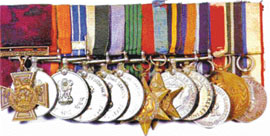

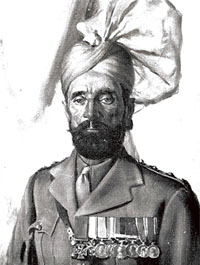 Sub Khudadad Khan
Sub Khudadad Khan The battles on the Western Front in which the Indian Army took part: La Bassee 1914, Ypres 1914-15, Givenchy 1914, Aubers, Bazentin, Morval, Messines 1914, Gheluvelt, Neuve Chapelle, Loos, Delville Wood, Armentieres 1914, Festubert 1914-15, St Julien, Somme 1916, Flers-Courcelette and Cambrai 1917--- ''They shall grow not old, as we that are left grow old:
The battles on the Western Front in which the Indian Army took part: La Bassee 1914, Ypres 1914-15, Givenchy 1914, Aubers, Bazentin, Morval, Messines 1914, Gheluvelt, Neuve Chapelle, Loos, Delville Wood, Armentieres 1914, Festubert 1914-15, St Julien, Somme 1916, Flers-Courcelette and Cambrai 1917--- ''They shall grow not old, as we that are left grow old:
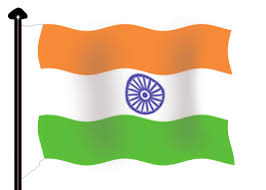



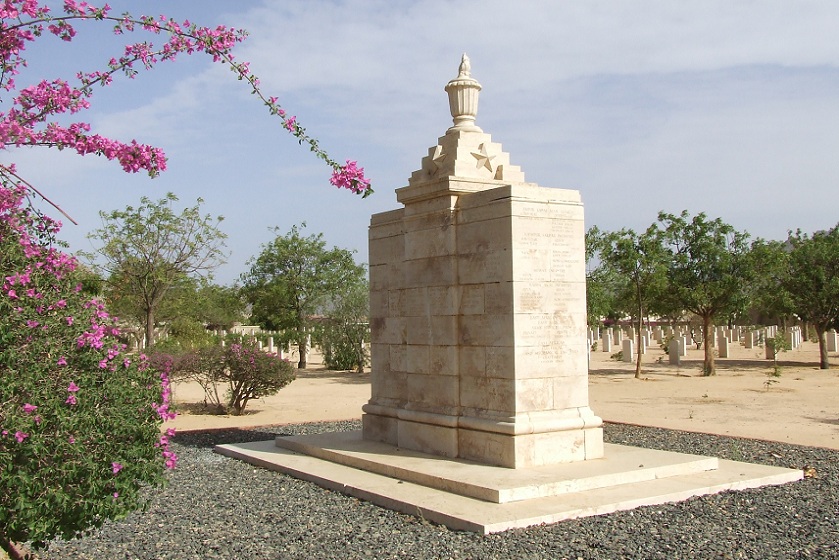

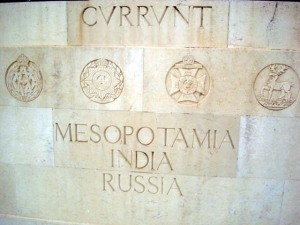 ''W
''W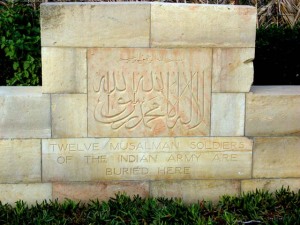 - ''What struck me about the Gaza War cemetary was not the ‘unlikeliness’ of its tranquility, nor the variety of nationalities and faiths buried there (over 3,600 soldiers of different countries, including India, Egypt, Canada, France, Belgium, Russia, Scotland, England, Greece…), but the craftsmanship of Ibrahim Jeradeh, the 72 year old retired gardener and caretaker who tended and nurtured the cemetery for over 50 years before passing the task on to his sons.''----visitors remarks.
- ''What struck me about the Gaza War cemetary was not the ‘unlikeliness’ of its tranquility, nor the variety of nationalities and faiths buried there (over 3,600 soldiers of different countries, including India, Egypt, Canada, France, Belgium, Russia, Scotland, England, Greece…), but the craftsmanship of Ibrahim Jeradeh, the 72 year old retired gardener and caretaker who tended and nurtured the cemetery for over 50 years before passing the task on to his sons.''----visitors remarks.

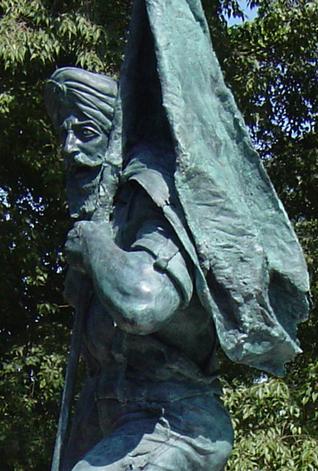

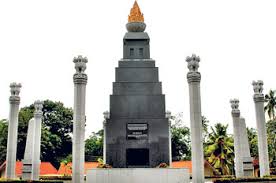
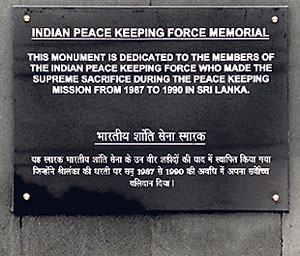


 ''W
''W - ''What struck me about the Gaza War cemetary was not the ‘unlikeliness’ of its tranquility, nor the variety of nationalities and faiths buried there (over 3,600 soldiers of different countries, including India, Egypt, Canada, France, Belgium, Russia, Scotland, England, Greece…), but the craftsmanship of Ibrahim Jeradeh, the 72 year old retired gardener and caretaker who tended and nurtured the cemetery for over 50 years before passing the task on to his sons.''----visitors remarks.
- ''What struck me about the Gaza War cemetary was not the ‘unlikeliness’ of its tranquility, nor the variety of nationalities and faiths buried there (over 3,600 soldiers of different countries, including India, Egypt, Canada, France, Belgium, Russia, Scotland, England, Greece…), but the craftsmanship of Ibrahim Jeradeh, the 72 year old retired gardener and caretaker who tended and nurtured the cemetery for over 50 years before passing the task on to his sons.''----visitors remarks.













![[linked image]](https://blogger.googleusercontent.com/img/proxy/AVvXsEhIRc-RP0uCUim-QU7ZsDAgWNMAO1PD1z5OIvyr8_bMuKZscYIFT0MDBe1JmAoQeTg9ZjH2fQIn5k4EbuyavN70lTDWT_WU37sY9PNU82htWawCWaZ08brye32QG0bYKBwac-nG4CY50_GqQuIbXv66EfmFFgWkQsS0=s0-d-e1-ft)























